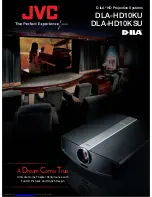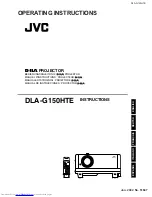
8
1. Introduction
Terminal Panel Features
2
3
1
12
8
9
10
11
7
4
5
15
16
13
14
6
1. HDMI 1 IN Connector (Type A)
(
→
2. HDMI 2 IN Connector (Type A)
(
→
3. DisplayPort IN Connector
(
→
4. BNC IN [R/Cr/CV, G/Y/Y, B/Cb/C, H, V] Connec-
tors (BNC × 5)
(
→
5. BNC (CV) Input Connector (BNC × 1)
(
→
6. BNC (Y/C) Input Connector (BNC × 2)
(
→
7. BNC AUDIO IN Mini Jack (Stereo Mini)
(
→
8. COMPUTER IN/ Component Input Connector
(Mini D-Sub 15 Pin)
(
→
,
)
9. COMPUTER AUDIO IN Mini Jack (Stereo Mini)
(
→
,
)
10. Ethernet/HDBase T Port (RJ-45)
(
→
11. USB-A Port (Type A)
(
→
(For future expansion. This port allows for power sup-
ply.)
12. HDMI OUT Connector (Type A)
(
→
13. AUDIO OUT Mini Jack (Stereo Mini)
(
→
14. 3D SYNC Connector (Mini DIN 4 Pin)
(
→
)
15. PC CONTROL Port (D-Sub 9 Pin)
(
→
Use this port to connect a PC or control system.
This enables you to control the projector using serial
communication protocol. If you are writing your own
program, typical PC control codes are on page
.
16. REMOTE Connector (Stereo Mini)
Use this connector for wired remote control of the
projector using the NEC optional remote control.
Connect the projector and optional remote control
using a commercially available wired remote control
cable.
NOTE:
• When a remote control cable is connected to the REMOTE
connector, infrared remote control operations cannot be
performed.
• When [HDBaseT] is selected in the [REMOTE SENSOR]
and the projector is connected to a commercially-available
transmission device that supports HDBaseT, remote control
operations in infra-red cannot be carried out if transmission
of remote control signals has been set up in the transmission
device. However, remote control using infrared rays can be
carried out when the power supply of the transmission device
is switched off.
















































